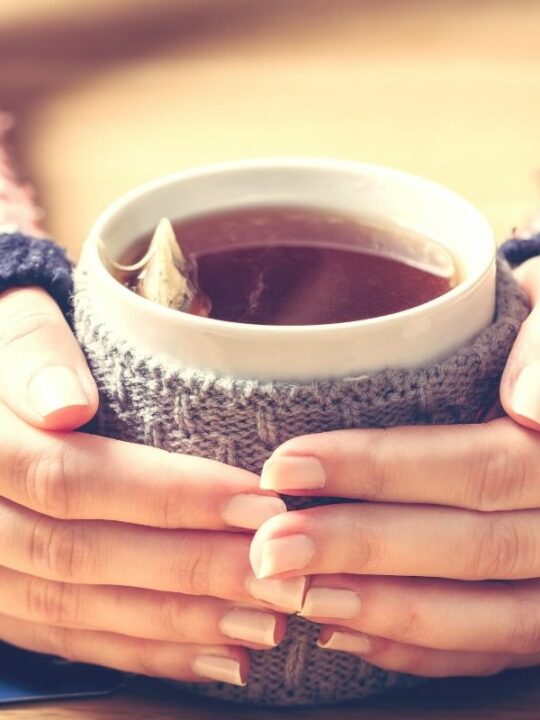Tea is a beverage that people drink throughout the world, but it is not prepared in the same way everywhere.
In fact, Americans get some friendly teasing from British people about their tendency to make black tea with water that isn’t hot enough.
Not every tea should be prepared with boiling water, though, so how do you know how hot the water for your tea should be?
We’ll help you figure out how to make sure that the water for your tea is the right temperature every time.
How hot does water need to be for tea?
Water for white tea should be around 150-155 F and for green and purple tea, around 165-175 F. For oolong tea, your water should be around 185-195 F. For black, herbal, rooibos and pu-erh tea, water should come to a full boil.
Why the temperature of the water is important for tea-making
Some people might wonder what the big deal is about getting the temperature of tea just right or why different types of tea require different water temperatures.
A general rule of thumb is that stronger teas benefit from hotter water because it brings out the flavor.
However, some teas are more delicate. Pour water over them that is too hot and you risk “burning” the tea.
This is not unlike burning your food when you’re cooking as it affects the flavor of the tea. The heat of the water may simply overwhelm the delicate flavors of green and white teas.
On the other hand, heartier black teas can withstand stronger temperatures while most herbal teas require hotter water to fully extract their flavor.
When the water for tea is not hot enough for the style of tea, then the flavor will be weak.
Knowing the temperature of water for tea if you don’t have a thermometer
Not everyone has a thermometer, so how do you know when you’ve brought water up to the right temperature for tea?
Everyone knows what boiling water looks like, so it’s easy to get the right temperature for black tea and herbal tea.
However, there are precautions you should take even for this. Sometimes, you might boil water for tea and then not get around to making it right away.
If this happens, is it okay to boil the water a second time?
Some people think this second boiling has an adverse effect on the flavor of tea, so if you do this and notice that the taste of your tea is not quite what you expect, this could be why.
If you are boiling water in a pan on the stove for white tea, it is at the right temperature when tiny bubbles start to pop up on the bottom of the pan.
You’ll know that the water for green tea is the right temperature when those tiny bubbles are just starting to rise to the surface.
Water for oolong tea is ready when the bubbles are bigger and there’s some steam.
If you live at a high altitude, then you are already aware that water boils at lower temperatures, so you may need to experiment and make some adjustments or simply make sure to use a thermometer.
Boiling and then cooling water for tea versus bringing the temperature up
For teas that don’t require boiling water, can you bring the water to a boil and let it cool down?
A lot of people advise against this. They think that it affects the taste of the tea in a negative way if the water is boiled and then cooled and that instead you should stop heating the water at the point where it reaches the optimal temperature and pour it over your tea.
However, some people say that the opposite is true! They say that for the best quality tea, the water needs to reach a boil first and cool down from there.
You can always try both methods and see which one you prefer.
Remember that if you want to boil and then cool, you’ll only be able to do this reliably if you have a thermometer to measure the temperature since you won’t be able to tell from the bubbles as the water heats.
Methods of heating water for tea
Your choices when heating water are basically to use an electric kettle, to heat your water on the stovetop or to heat your water in the microwave.
Electrical kettles are not common in the United States although you see them throughout the rest of the world.
This is the most efficient way to boil water, and some of them come with temperature controls that will heat the water but shut off before boiling.
However, not every electric kettle has this option, which would leave you only the option of boiling.
Heating water on the stovetop is slower, but it gives you more control over the temperature.
The last option is the microwave.
If you want to see a tea aficionado shriek in terror, you can suggest this.
While heating your water in a microwave might be better than not having tea at all, anyone who has ever used a microwave knows that it doesn’t heat evenly.
This can result in water that is not an even temperature, which can in turn affect the taste of your tea.
